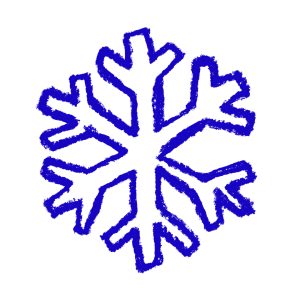Winter Water Safety Messaging

The Bedfordshire Fire and Rescue Service have produced a Winter Water Safety toolkit designed to educate, advise and raise awareness in order to help people manage risk around water.
They have kindly let us share this toolkit with you which has lots of really useful information and advice around water safety in Bedfordshire.
It’s important to warn, inform and educate members of the public of how they can enjoy the great outdoors in winter, safely and what to do in an emergency situation. Many people will be near open water to enjoy the countryside for dog walking, fishing etc.
Flooding can also happen quickly, and we need to make sure members of the public have the appropriate advice and can be prepared well in advance.
General Advice for Winter
- Keep back from slippery banks and wear footwear with good grip.
- Stick to well-lit areas. The reduction in daylight in the winter adds to risks around water. Plan walks in the day or along well-lit paths.
- Ice can be extremely vulnerable even during periods of prolonged cold. Never go onto the ice.
- Keep children within reach and teach children not to go onto ice.
- Keep dogs on lead near ice and slippery banks.
- If out enjoying a winter walk, walk with friends.
Alcohol or recreational drugs and water don’t mix. Alcohol and drugs can impair your judgement, reactions, and ability to swim. If you’re enjoying time near water don’t drink and keep yourself and your mates safe #BeWaterAware
Ice safety advice for visitors to waterways
- Plan your route if you’re going out and about near waterways in winter
- Look out for the signs and warnings. They are placed to warn of non-obvious hazards
- Stay off the ice and frozen waters they will not be able to hold a person’s weight
- Keep away from the edge, and be aware that snow and leaves may obscure the edge
- Supervise children around ice and waterways
- Keep your dog on a lead near ice and frozen waters and don’t throw sticks or balls onto the ice for them.
In an Emergency – WATER
If you see somebody in trouble in the water.
- Call 999
- Ask for the Fire Service if inland
- Ask for the Coastguard when at the coast
- Never enter the water to attempt a rescue #BeWaterAware
If you see someone struggling in the water, remember this lifesaving advice Call 999
- Tell them to float on their back
- Throw something to help them float
- #BeWaterAware #RespectWater
 In an Emergency – ICE
In an Emergency – ICE
What to do if you fall through the ice:
- Keep calm and shout for ‘help’.
- Spread your arms across the surface of the ice in front of you.
- If the ice is strong enough, kick your legs to slide onto the ice.
- Lie flat and pull yourself towards the bank.
- If the ice breaks, work your way to the bank-breaking the ice in front of you.
- If you cannot climb out, wait for help and keep as still as possible. Preserve heat by pressing your arms by your side and keep your legs together. Keep your head clear of the water.
- Once you are safe, go to hospital immediately for a check up
What to do if you see someone fall through the ice:
- Shout for assistance and phone the emergency services – call 999 or 112.
- Do not walk or climb onto the ice to attempt a rescue.
- Shout to the casualty to ‘keep still’ and offer reassurance to keep them calm.
- Try and reach them from the bank using a rope, pole, tree branch, clothing tied together or anything else which can extend your reach.
- When reaching from the bank, lie down to avoid being pulled onto the ice.
- If you cannot reach them, slide something which floats, such as a plastic bottle or football, across the ice for them to hold onto to stay afloat whilst help is on the way.
- If the casualty is too far away, do not attempt to rescue them. Wait for the emergency services while calming and reassuring the casualty.
What to do after the casualty has been rescued from the ice:
- Make sure the ambulance is on its way.
- Lay the casualty flat, check for normal breathing and begin resuscitation if necessary.
- Prevent them from getting colder by covering them with warm clothing, blankets etc.
- Get them out of the cold under cover or create some shelter around them.
- Until the casualty is in a warm place, do not undress them.
- Do not rub their skin, do not apply hot water bottles and do not give an alcoholic drink.
- Keep them wrapped up so they warm up gradually.
Flood Advice
- Sign up for flood warnings www.gov.uk/sign-up-for-flood-warnings
- Keep up to date with the latest flood risk situation- call Floodline on 0345 988 1188 or follow @EnvAgency and #floodaware on Twitter for the latest flood updates
- Have a bag ready with vital items like insurance documents and medications in case you need to leave your home
- Check you know how to turn off your gas, electricity and water mains supplies
- Plan how you’ll move family and pets to safety
What to do if you get a flood warning:
A flood warning means you need to act: flooding is expected. You should do all the actions for a flood alert, but also:
- move vehicles to higher ground if it’s safe to do so
- move family and pets to safety
- move important items upstairs or to a safe place in your property, starting with cherished items and valuables, then furniture and furnishings
- turn off gas, electricity and water supplies if it’s safe to do so; never touch an electrical switch if you’re standing in water
- if you have property protection products such as flood barriers, or air brick covers, use them now
- keep track of the latest flood risk situation
What to do if you get a severe flood warning:
A severe flood warning means there is danger to life: you must act now.
- Call 999 if you’re in immediate danger
- Follow advice from the emergency services and evacuate if you’re told to do so
- Make sure you have an emergency kit including a torch, spare batteries, mobile phone and charger, warm clothes, important numbers like your home insurance, water, food, first aid kit and any medicines and baby care items you may need
- Alert neighbours and offer help if it’s safe to do so
- Avoid driving or walking through flood water: just 30cm (1 foot) of fast flowing water could move your car and even shallow moving water can knock you off your feet
- Keep your family and pets away from floodwater – it may contain heavy debris, sharp objects, open manhole covers, sewage and chemicals
- Wash your hands if you’ve been in contact with flood water which may contain toxic substances
Further Information
- NFCC – #BeWaterAware campaign toolkit – Messaging can be used all year round. This includes messaging for paddleboarders/kayaks/Canoes NFCC_Be_Water_Aware_2023_Toolkit.pdf (nationalfirechiefs.org.uk)
- Dedicated website for #Respect the water – messaging can be used all year round Respect The Water
- RLSS – Winter Water Safety | Royal Life Saving Society UK ( RLSS UK ) and RLSS UK’s Don’t Drink and Drown campaign
- ROSPA – Ice Safety | RoSPA – RoSPA
- Gov.UK – What to do in a flood – Check for flooding – GOV.UK (check-for-flooding.service.gov.uk)
- BFRS Website – : Flooding | Bedfordshire Fire and Rescue Service (bedsfire.gov.uk)
- BFRS Socials – @BedsFire
Fun ways about to teach kids about water safety
Staywise – https://staywise.co.uk/public Emergency services educational platform. The Poster below is available to download
Canals and Rivers Trust –Winter water safety | Canal & River Trust (canalrivertrust.org.uk)
Remember to #BeWaterAware. If you have any questions about this blog post, please email [email protected].
Posted on: 11th January 2024




